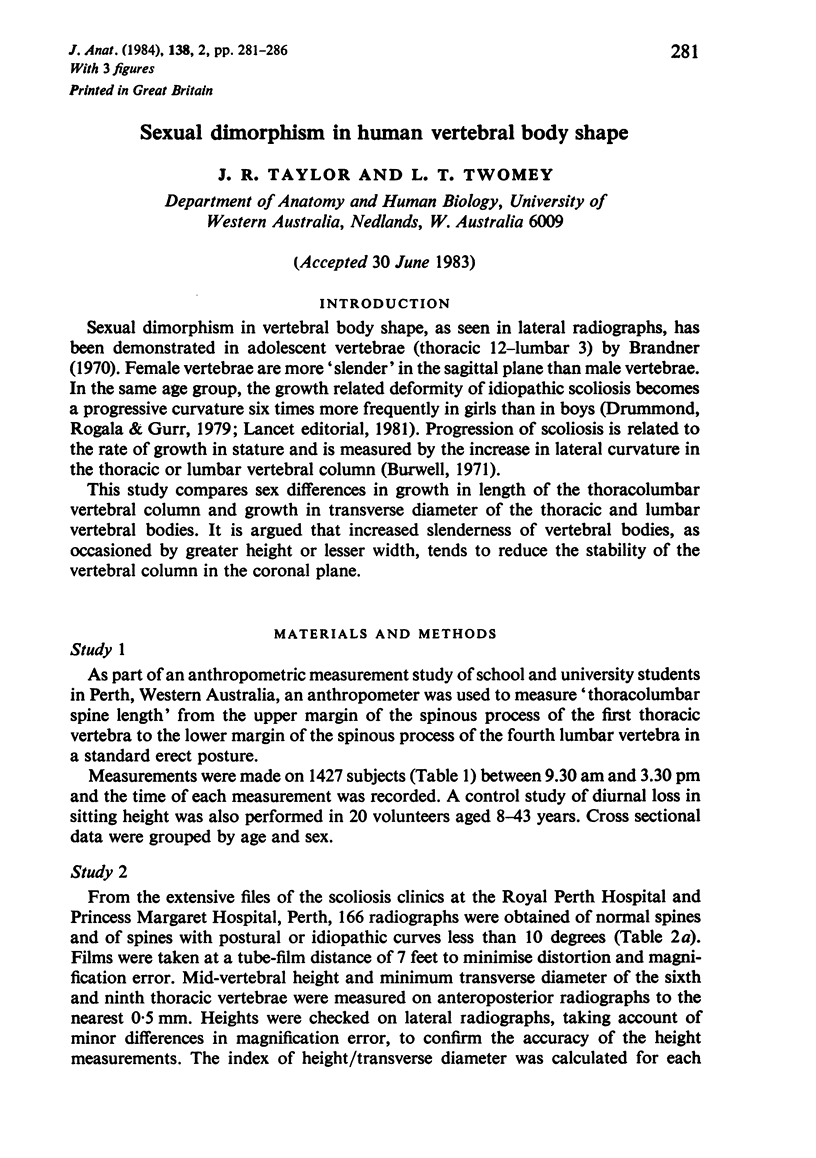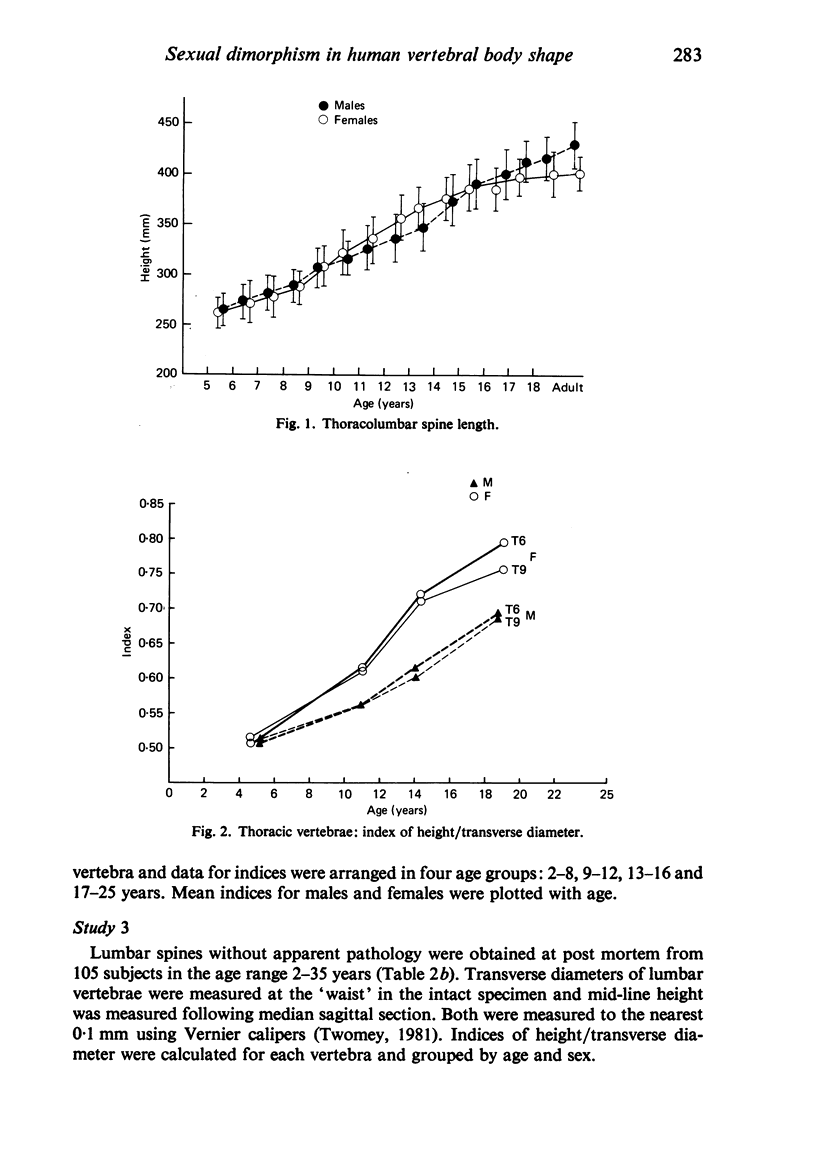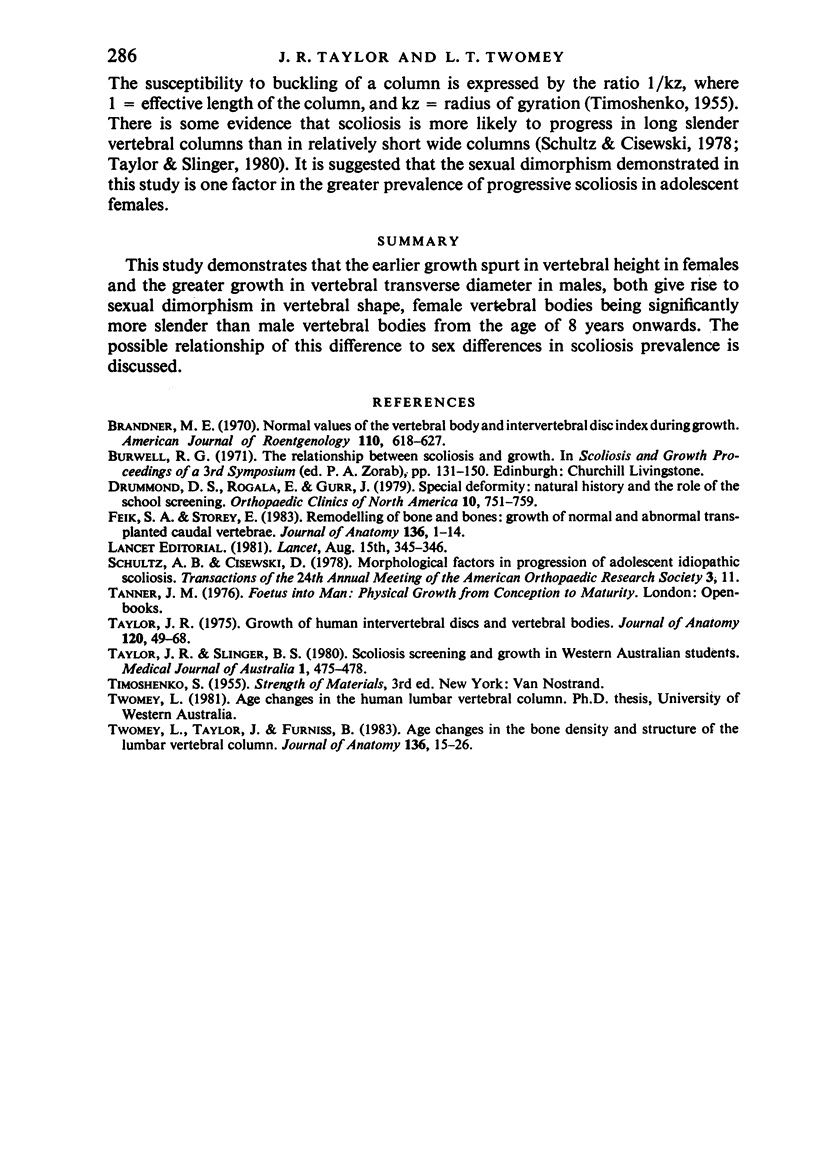Abstract
This study demonstrates that the earlier growth spurt in vertebral height in females and the greater growth in vertebral transverse diameter in males, both give rise to sexual dimorphism in vertebral shape, female vertebral bodies being significantly more slender than male vertebral bodies from the age of 8 years onwards. The possible relationship of this difference to sex differences in scoliosis prevalence is discussed.
Full text
PDF





Selected References
These references are in PubMed. This may not be the complete list of references from this article.
- Brandner M. E. Normal values of the vertebral body and intervertebral disk index during growth. Am J Roentgenol Radium Ther Nucl Med. 1970 Nov;110(3):618–627. doi: 10.2214/ajr.110.3.618. [DOI] [PubMed] [Google Scholar]
- Drummond D. S., Rogala E., Gurr J. Spinal deformity: natural history and the role of school screening. Orthop Clin North Am. 1979 Oct;10(4):751–759. [PubMed] [Google Scholar]
- Feik S. A., Storey E. Remodelling of bone and bones: growth of normal and transplanted caudal vertebrae. J Anat. 1983 Jan;136(Pt 1):1–14. [PMC free article] [PubMed] [Google Scholar]
- Taylor J. R. Growth of human intervertebral discs and vertebral bodies. J Anat. 1975 Sep;120(Pt 1):49–68. [PMC free article] [PubMed] [Google Scholar]
- Taylor J. R., Slinger B. S. Scoliosis screening and growth in Western Australian students. Med J Aust. 1980 May 17;1(10):475–478. doi: 10.5694/j.1326-5377.1980.tb135043.x. [DOI] [PubMed] [Google Scholar]
- Twomey L., Taylor J., Furniss B. Age changes in the bone density and structure of the lumbar vertebral column. J Anat. 1983 Jan;136(Pt 1):15–25. [PMC free article] [PubMed] [Google Scholar]


